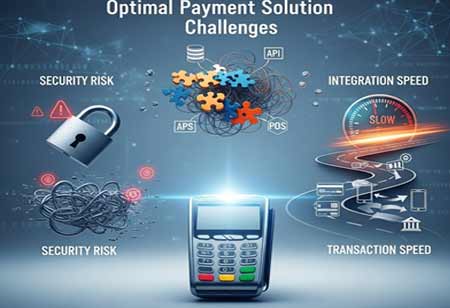THANK YOU FOR SUBSCRIBING

By
Banking CIO Outlook | Tuesday, September 16, 2025
Stay ahead of the industry with exclusive feature stories on the top companies, expert insights and the latest news delivered straight to your inbox. Subscribe today.
Fremont, CA: As the commercial world embraces digitalisation, businesses face increasing pressure to provide seamless, secure, and efficient customer payments. Flexible payment option requirements are increasing, but selecting the best payment system comes with challenges. Payment systems must seamlessly integrate into existing infrastructure, comply with various regulations, and not interrupt user experience. Given these challenges, businesses must weigh many other factors when evaluating the most suitable payment method.
Integration and Compatibility with Existing Systems
Many companies face the key challenge of integrating new payment solutions effectively with existing infrastructures, such as POS systems, online storefronts, and ERP systems. Successful integration can significantly enhance operational efficiency within an organisation. To achieve this, companies need to ensure compatibility with accounting software, inventory management systems, and CRM tools to reduce the need for manual data entry.
Without proper integration, businesses may experience delays, errors, and inefficiencies, which can disrupt the customer experience and increase costs. Therefore, when evaluating a payment solution, it is crucial to consider not only its features but also how well it will work with the various tools already in use.
Security Concerns and Fraud Prevention
Security is also a significant drawback in establishing such payment solutions. Cyber threats now tend to escalate along with virtual transactions such as data breaches, identity theft, and fraud. Sensitive client information, such as credit card numbers and personal information, can be less susceptible to loss through safe systems offered by payment providers in which these pieces are encrypted. It includes a new way to pay, online deposits for mobile wallets, contactless payment, and how companies assess the security within those new delivery methods. Such considerations, together with tokenisation, multi-factor authorisation, and other measures associated with fraud prevention, must be presented when customers adopt a payment method. On a broader scale, the payment system should satisfy the PSD criteria for regulation and security requirements, such as PCI DSS. Any business that desires to ignore security could risk suffering losses at a financial and reputational level.
Regulatory Compliance and Evolving Standards
This is still an enormous challenge that most organisations face in the industry today. Regions have distinct laws, regulations, and rules regarding payment processing; thus, compliance with each can become complicated. Whether it is the General Data Protection Regulation of the European Union or even regional consumer protection laws, these organisations must ensure that their payment systems conform to these regulations to escape fines and legal proceedings. Moreover, governments keep changing payment policies to keep abreast with innovative technologies introduced into the market. Organisations have to keep moving fast to keep pace with those changes. Choosing a flexible payment solution with future-proofing capabilities is critical for long-term sustainability.
Selecting an optimal payment solution involves overcoming several challenges, including integrating existing systems, ensuring robust security measures, and staying compliant with evolving regulations. While the landscape of payment solutions is diverse, businesses that approach these challenges thoughtfully and strategically will be well-positioned to provide their customers a smooth, secure, and compliant payment experience. As the digital economy grows, businesses that navigate these challenges successfully will enhance their competitiveness and build trust with their customer base.
THANK YOU FOR SUBSCRIBING
Be first to read the latest tech news, Industry Leader's Insights, and CIO interviews of medium and large enterprises exclusively from Banking CIO Outlook
I agree We use cookies on this website to enhance your user experience. By clicking any link on this page you are giving your consent for us to set cookies. More info



